
Donating your things to thrift stores is a great choice, if you’re looking to declutter your home, move, or give back to the community. It not only extends the life of your belongings but also benefits the thrift store you choose to donate to. Many thrift stores will be glad to work with you, they even offer a receipt that you can use to deduct your donation on your next tax return. However, not everything you have may be suitable for donation.
Some thrift stores may decline oversized items such as furniture and large appliances. Additionally, heavily damaged, stained, or worn-out items may not be accepted. In general, thrift stores are run by charitable organizations that mostly rely on volunteers. Unloading and sorting your excess items can be a burden on their already overworked staff. If you want to know what items can or can not be donated, read on!
50. Obsolete Items

Think twice that if the item will be useful to others before donating it to the thrift store. Although thrift stores offer great deals on items, their customers will not be interested in outdated technology, such as bulky TVs or cassette players. Instead, people are more interested in modern electronics like flat-screen TVs. So, when you’re considering donating your old VHS tape collection and VCR, keep in mind that there is a small chance of selling these outdated items. Therefore, most thrift stores won’t accept these types of donations.
Besides old-school televisions, outdated books and electronics are also not popular for donating. Will anyone go to a thrift store looking for a book or CD player from the 1980s? Probably not. Because these items are unlikely to sell quickly but take up valuable space in the store, many thrift stores will reject them. Properly dispose of your old electronics by taking them to an electronics recycler, or you could try listing them on a marketplace app to see if anyone is interested. You might even consider donating your old books to your local library, which is a great way to give them a second life.
49. Mattresses and Box Springs

Ever wondered what to do with your old mattress or box spring after getting a new one? It’s no secret that disposing of old mattresses and box springs can pose a challenge. Landfills are often unwilling to accept them due to their bulkiness. You might have even attempted to sell them, only to realize that mattresses and box springs aren’t in high demand. They could end up taking up space in your basement or garage until you find a new home for them. Even if your mattress and box spring appears to be in good condition, they aren’t suitable for donation to thrift stores.
Thrift stores typically avoid accepting large furniture items, unless they’re in excellent condition. And let’s be honest, would you purchase a used mattress or box spring? It’s unlikely. So, expecting someone else to buy yours might not be realistic. Additionally, thrift stores cannot guarantee that your items are free from issues like mold, bed bugs, or dust mites. The potential risks associated with used mattresses and box springs make them unappealing to thrift stores. To responsibly dispose of your mattress and box spring, the best course of action is to get in touch with your local garbage disposal company. They can guide you on the most suitable method for discarding these items.
48. Anything that Can Hold Children

If you’re a parent, you’re undoubtedly familiar with the array of items your child requires. As they grow, their needs shift to accommodate newer, larger necessities. These items can easily fill up spaces throughout your home, including basements and garages. Once your children outgrow these items, your house can become a storage hub for accumulated equipment. To declutter, donating might cross your mind. Cribs, strollers, car seats, and high chairs might appear suitable for contributing to local thrift stores. Regrettably, due to frequent recalls, donating these items isn’t a safe option.
Car seats come with expiration dates and are susceptible to accidents. Donated seats might have an uncertain history or condition. Donating children’s equipment in this manner jeopardizes child safety. Many thrift stores adhere to a policy that prevents them from accepting such items. Seek out resources in your vicinity that facilitate the proper disposal of car seats and related gear. Depending on their condition and expiration dates, you could consider giving them to friends or family. Thrift stores are unable to take on these items and the associated liability that comes with their uncertain history.
47. Large Appliances

Much like the scenario when acquiring a new mattress or box spring, replacing an old appliance often raises the question of what to do with the outdated one. In today’s world, there’s minimal demand for secondhand machines. When upgrading to a new refrigerator, washer, dryer, or stove, the inclination to donate the old one can arise, given its decent condition. However, this decision might not be the wisest. Large items, especially appliances, are generally not accepted by most thrift stores. These stores can’t ensure the functionality of these items or guarantee their quick sale.
If you find yourself needing to part ways with an old appliance, it’s advisable to reach out to hardware retailers such as Home Depot or Lowe’s to inquire about their haul-away services. Alternatively, there are junk removal services that can be scheduled to pick up items directly from your home. Exploring options like scrap metal recycling facilities might also lead to the acceptance of your larger appliances. Another avenue is attempting to sell these appliances. Whether your goal is to earn a bit of money from your old device or simply to dispose of it, various pathways are available for consideration.
46. Things You Got for Free

Most of us possess a junk drawer, housing an assortment of odds and ends gathered from various sources, often acquired for free. These items may encompass company-branded T-shirts, giveaways you’ve won, and miscellaneous trinkets that can swiftly clutter your living space. Often, the contents of our junk drawers are comprised of things we wouldn’t even notice were gone. If these items hold little value to you, it’s likely they won’t hold much appeal for others either. While donating to thrift stores is a kind gesture, it’s prudent to carefully consider the items you choose to contribute.
In a similar vein, when sorting through your possessions, it’s considerate to spare the time of thrift store staff by refraining from donating personalized, free items. This could include distinctive shirts, keychains, or branded cups. These items hold sentimental value to you as they were gifted uniquely, and their appeal might not extend to a broader audience. This rings especially true if your name has a creative flair or an unconventional spelling. While discarding these complimentary items might seem wasteful, it’s a practical choice. If no one in your circle expresses interest in such items, it’s advisable to dispose of them.
45. Baby Bottles and Breast Pumps

As your children grow and progress, certain possessions will naturally become obsolete. For instance, as your little ones graduate from bottles and move beyond breastfeeding, you might question the necessity of retaining these items. Although bottles and breast pumps often remain in good condition post-use, they may not align with thrift store criteria. Much like other baby-related items, thrift stores generally decline baby bottles and breast pumps due to hygiene concerns. Many potential buyers would hesitate to purchase secondhand baby bottles or pumps.
The primary issue here is sanitation. When donating, it’s challenging to ascertain the cleanliness of these items. Even if you meticulously clean them, potential buyers might still have reservations. The donated items lack a documented history, and concerns also extend to recalls and issues involving chemicals like BPA, rendering certain bottle types unusable. It’s advisable to avoid placing outdated baby bottles and breast pumps in donation bins. The uncertainties and apprehensions involved make it impractical to bring them to a thrift store, only to face potential rejection due to these valid concerns.
44. Anything Vulgar

If you possess stickers, shirts, or other garments featuring offensive language or messages, it’s advisable to avoid bringing them to thrift stores. These items might have been received as humorous presents or part of a family holiday exchange. Nevertheless, many thrift stores have faith-based affiliations and would find these items offensive. Such establishments wouldn’t display them on their shelves, which would necessitate employees’ time in disposing of them. Additionally, thrift stores cater to families, and parents wouldn’t want their children exposed to crude or profane content.
Similarly, explicit or suggestive content in books and movies, like “50 Shades of Grey,” wouldn’t find acceptance. Profane or mildly sexual content isn’t suitable for thrift stores, as they aim to maintain a family-friendly environment. Instead of donating such items, there are alternatives. You could check if friends or family have an interest in them. Selling them is another option, though it’s essential to choose appropriate platforms. Alternatively, for offensive clothing, discarding it is recommended, while potentially controversial books and movies could be donated to libraries.
43. Broken Items

It’s a fundamental rule that you should refrain from bringing discarded items to thrift stores for donation. If an item is broken, dirty, or significantly damaged to the point where you can’t use it, it’s unreasonable to assume someone else would be willing to purchase it. You might be under the impression that certain individuals enjoy dismantling broken phones or laptops for repairs. While this might hold some truth, taking these items to thrift stores isn’t a suitable approach. Instead, consider seeking assistance from friends and family who might have connections, or explore the option of listing such items for free on sales platforms. It’s important to avoid contributing unusable items to donations.
Thrift stores aren’t intended to serve as disposal sites, laundromats, or repair shops. Transferring items that are essentially unusable for thrift store employees for them to handle is unfair and disruptive to their daily operations. Sorting through and disposing of unsuitable items takes away from their regular tasks. If you have items that are beyond salvage, it’s more appropriate to find local waste disposal facilities or junk services to properly discard them. Moreover, if you’re aware that an item, such as a phone or laptop, is not in working condition, it’s unethical to present it at a thrift store as functional. Attempting to pass off non-functional and broken items in such a manner is deceptive and dishonest.
42. Things That Can Grow Mold

Thrift stores lack the capacity to adequately clean and sanitize the items that come into their inventory. Their process involves assessing items, determining resale potential, and placing them on shelves for sale. Donating items prone to mold growth is counterproductive. Thrift stores face challenges in preventing mold formation, particularly concerning items that can retain trapped moisture, especially in humid environments. Moreover, if you’re aware that an item has previously harbored mold, it’s not responsible to pass it along to a thrift store, thereby transferring the problem to someone else.
Items like dehumidifiers, tea kettles, and others that inherently generate moisture can rapidly develop mold. Given the difficulty of assessing the cleanliness of secondhand appliances like these, many thrift stores refrain from accepting them. As previously mentioned, they also decline breast pumps due to the complexity of thoroughly cleaning milk residue from the machines. If you possess such items that have been stored in your basement or garage, awaiting decluttering, there’s a possibility they’ve been exposed to mold. At the very least, they might still retain some moisture and hold the potential for mold growth.
41. Filled Up Coloring Books or Workbooks

Coloring is an activity that brings joy to both children and adults, and it remains a popular trend. Taking a moment to relax while coloring in an enjoyable coloring book can be truly therapeutic. While purchasing coloring books from thrift stores is a fantastic idea, it’s essential that these books are predominantly unused. Although it might appear obvious, it’s worth emphasizing that donating coloring books or workbooks with few untouched pages isn’t advisable. Few individuals would want to spend their money, no matter how affordable, on a book with only a handful of pages left to color or complete.
You might assume that donating a coloring book that’s only halfway filled is acceptable, but it’s worth reconsidering. Children wouldn’t find it appealing to work on a coloring book that has been partially filled by someone else. The same principle applies to puzzle books – kids won’t have a positive experience if they open a book only to find that a puzzle or maze has already been solved. If you possess older coloring books or workbooks with only a few pages utilized, it could be worthwhile to keep them for occasions when you have company. Alternatively, if you choose not to retain them, it’s best to recycle those used coloring books responsibly.
40. Pianos

Thrift stores generally find oversized items to be impractical for their limited space. These establishments strive to offer a diverse range of items within their confined area. Handling oversized items, such as pianos, armoires, or entertainment centers, proves to be a challenge. These items not only occupy excessive space but are also cumbersome and costly to transport. Moreover, certain large pieces like pianos don’t enjoy significant demand. Similarly, just as they monopolize valuable real estate within thrift stores, many individuals feel that these items consume excessive space in their own homes.
If you’re considering donating a piano or another substantial item, it’s advisable to explore the option of selling it instead. Numerous avenues are available for selling such items. Platforms like Craigslist, LetGo, and Facebook Marketplace provide opportunities to list your item for sale. This approach might even yield some monetary compensation, allowing your piano to find a new home. Alternatively, if your goal isn’t to gain a financial return, consider reaching out to a local music school. These institutions often welcome donations of large musical instruments like pianos, benefiting students by expanding their learning resources and equipment. Your generous contribution could significantly contribute to students’ growth and education.
39. Oversized Items

As previously mentioned, donating oversized items to thrift stores is generally discouraged. These establishments lack the necessary space and manpower to accommodate large items. Such items tend to occupy an excessive amount of valuable floor space in thrift shops and often face slow turnover in sales. The potential buyer pool for oversized items is notably restricted. Shoppers seeking items like sofas, bed frames, or dressers often have specific preferences in mind. Consequently, if the thrift store doesn’t happen to stock that exact item, these large pieces may remain unsold until a suitable buyer appears.
For those in possession of sizeable items like appliances, sofas, cabinets, or other oversized goods, a more effective approach would be to list them on resale platforms such as Craigslist or LetGo. In instances where selling isn’t feasible, reaching out to a junk hauling company or your local waste disposal service to arrange for pickup can be a viable solution. Alternatively, you might consider donating these items to a friend or family member who shares your taste and could benefit from them. If a thrift store declines the acceptance of your oversized items, it’s crucial to refrain from leaving the items behind after closing hours. Such an action is not only highly disrespectful but also creates significant challenges for thrift store employees.
38. Garage Sale Leftovers

Following a garage sale, you might find yourself with a surplus of leftover items. While it might appear straightforward to take these items to a thrift store, it’s worth reconsidering this decision. If you couldn’t attract buyers for these items during your garage sale, they might face similar challenges in selling at a thrift store. There could be valid reasons behind your inability to find buyers earlier. Instead of hastily transporting all your unsold items to a thrift store, it’s advisable to conduct a thorough assessment of each item. This evaluation should encompass factors such as functionality, cleanliness, and operational condition.
In instances where you’re uncertain about whether a thrift store would accept a particular item, it’s a good idea to give them a call. Different thrift stores might have varying guidelines and criteria for the types of items they’re willing to take. If a thrift store declines certain items, consider exploring alternatives such as listing your items on platforms like freecycle.org. This platform facilitates the process of giving away unwanted items for free, without any monetary transactions involved. It’s advisable to prioritize giving away items before resorting to disposal at your local landfill. As always, make sure to responsibly dispose of items like large appliances or electronics, adhering to appropriate disposal practices.
37. Encyclopedias

In the contemporary era, the Internet serves as the primary source of information for the majority. The utilization of encyclopedias for research purposes has become infrequent. In contrast to today’s scenario, encyclopedias held significant importance in years gone by, serving as essential tools for conducting research and academic writing. However, as technology and human practices have advanced, the evolution of readily available resources has rendered encyclopedias obsolete in today’s context. Notably, some individuals opt to retain encyclopedias as decorative items within their homes, often adorning libraries, offices, or living room bookshelves.
The majority of encyclopedias, reference materials, and outdated textbooks are no longer practical for use, making them unsuitable for donation to thrift stores. Their sizable dimensions consume substantial shelf space, and their appeal is limited to a specific audience, rendering sales complex. Prolonged shelf occupancy with slow or nonexistent sales further exacerbates the situation. For the proper disposal of textbooks, encyclopedias, or other large educational books, consider donating them to your local library. Alternatively, attempting to sell them on platforms like eBay could be an option. Should sales not materialize, recycling centers can provide an environmentally responsible means of discarding these books.
36. Hazardous Materials

Disposing of hazardous materials can present challenges, but donating them to a thrift store is not a viable solution. Items such as cleaning supplies, paint, cosmetics, and other chemical-based products are unsuitable for thrift shopping and should not be offered for donation. The inherent difficulty in accurately identifying the ingredients of these items makes them potentially unsafe for customers. Furthermore, expired or improperly mixed chemical items can lead to toxic situations. Due to these concerns, many thrift stores decline donations of such items due to their hazardous nature.
Thrift store staff members lack the expertise to identify hazardous chemicals and lack appropriate storage space for them. Properly disposing of dangerous materials demands significant time and effort, rendering thrift stores unsuitable for this purpose. It’s worth noting that most people are not inclined to purchase partially used containers of cleaning supplies or similar items. Instead of donating them, it’s advisable to contact a hazardous waste disposal company to inquire about their acceptance policies. If they are unable to accept your items, they may provide guidance on appropriate disposal methods. It’s crucial to avoid pouring paint, cleaning supplies, or chemicals down drains, as this can lead to environmental harm.
35. Trash

While it might appear self-evident, it’s crucial to avoid bringing heaps of trash to your local thrift store. The time spent unloading bags of garbage there could instead be used to appropriately dispose of waste at a landfill. Not only is this inconsiderate, but it’s also unfair to thrust the responsibility of dealing with your garbage onto thrift store employees. The notion that “one man’s trash is another man’s treasure” does not hold true for everything. Although some items can still be donated or resold, others are simply waste.
Thrift store employees already have a full workload and shouldn’t be burdened with sorting through trash. Thrift stores that receive bags of trash generally won’t sift through them due to time constraints and limited resources; such bags usually end up being discarded entirely. Opting to take your garbage to an appropriate disposal site, like a landfill, is the more sensible choice. Just as you wouldn’t appreciate having to sort through someone else’s trash, it’s unfair to expect thrift store workers to do so. Take the time to sort through your unwanted or unneeded items, distinguishing between those suitable for donation and those truly destined for disposal.
34. Walkers

Walkers serve as vital mobility aids for many individuals, granting them the ability to move around with confidence. Ensuring the stability and reliability of a walker is paramount. While donating a walker you no longer need might seem like a thoughtful gesture, it’s important to recognize that doing so might not guarantee safety. The person using a walker must feel secure and assured of its stability, and assessing this can be a challenge for thrift store employees. Their familiarity with walkers and knowledge of stability factors may be limited. Moreover, the walker might possess hidden damage that compromises its functionality.
Donating an unreliable walker could potentially endanger the next user. Numerous locations might decline walker donations to prioritize customer safety. Similar to other donated items, thrift stores may reject walkers due to the lack of information about their history. A walker could have undergone prior damage and repair, presenting safety concerns. Hospitals or rehabilitation facilities could be better options for donating walkers. Trained professionals at such institutions possess the expertise to evaluate the reliability of walkers. If deemed unfit, they can ensure proper disposal, ensuring safety for all concerned.
33. Items that Smell

Thrift stores do not operate as laundry facilities. Employees are not tasked with cleaning soiled garments. Donating items that are dirty or emit unpleasant odors is not appropriate for your local thrift store. Likewise, refrain from donating shoes that are dirty or malodorous. Consider whether you would personally purchase an item with a strong, undesirable scent – the likelihood is minimal. Not only do thrift stores lack the resources to restore these items to cleanliness, but the prospect of selling them is also exceedingly slim. Items with strong odors are often overlooked by shoppers seeking appealing purchases.
The responsibility for laundering and preparing clothes and shoes for sale does not fall on thrift store employees. Stopping clean clothes and shoes with strong odors would consume significant time and effort. Unpleasant smells have the potential to permeate nearby items, rendering them unsuitable for resale as well. It is advisable to consistently launder any clothing and shoes before donating them to thrift stores. If the odor proves unremovable, proper disposal is recommended. If an item emits such a strong odor that you would not consider picking it up while shopping, it’s prudent to dispose of it responsibly.
32. Old TVs

Certain items, even when offered as donations, may not align well with thrift store needs. Outdated televisions, similar to old encyclopedias, are not optimal for the donation pool. In today’s landscape, the prevalence of flat-screen TVs diminishes interest in the larger, bulkier televisions that were prevalent a decade or more ago. While these older TVs might evoke nostalgia, their impractical size and lack of compatibility with modern high-definition standards render them less desirable. Additionally, wall-mounting, a common choice for flat-screen TVs, is often unfeasible with traditional models.
Outmoded televisions consume disproportionate floor space in thrift stores. Most thrift shoppers gravitate toward clothing, books, and jewelry, while the electronics section is often overlooked. Donating old TVs places an added burden on thrift store employees who must address unsellable items. Moreover, issues are more likely to arise with older television models, which are not easily repairable. Consequently, reluctance to purchase such items is prevalent. It’s advisable to reach out to an electronics recycling center to inquire about their acceptance policy for old TVs or to seek guidance on proper disposal methods.
31. Furniture in Poor Condition

Thrift stores exercise careful discretion in their acceptance process, particularly with regard to furniture donations. Furniture exhibiting chips, scratches, or stains is unlikely to sell and therefore is deemed unsuitable for donation. The rationale behind the reluctance to accept older couches or chairs that may appear outwardly acceptable lies in practical considerations. Furniture occupies substantial space within thrift stores, and its resale can be challenging. Preferences for furniture align with specific styles, leading to extended periods before a sale is made.
Thrift store employees lack the means to ascertain the cleanliness of donated items with cushions. They cannot determine whether the items harbor bed bugs or dust mites. Due to the absence of equipment to adequately clean and disinfect furniture, the acceptance of worn or soiled items proves unfeasible. Items with scrapes, chips, or stains are more likely to be bypassed by customers. Consequently, these items tend to linger within the store without being sold. Although parting with old furniture can be emotional, considering disposal at a landfill is advisable if the pieces are in poor condition.
30. Scratched DVDs or Video Games

DVDs and video games consistently rank among the top-selling items at thrift stores. Individuals of all ages enjoy perusing through the assortment of discs, seeking enjoyable content to watch or play. For adults, the experience might evoke nostalgia as they encounter DVDs or video games they cherished in their youth. The excitement of rediscovering a favorite movie or game and the desire to share it with loved ones or friends can be captivating, akin to reliving cherished memories. Hence, the disappointment is palpable when a purchase is made, only to discover at home that the disc is rendered unusable due to scratches.
Taking a few additional moments to assess the condition of your movies and video games before donating them is of paramount importance. Minimal wear, such as one or two tiny scratches, may be acceptable, but anything beyond that is deemed unacceptable. It is advisable to test all your discs prior to donating them. Should your DVDs, video games, or even CDs exhibit significant scratching, disposing of them is the more prudent course of action. While your intention might be to make a donation, it’s crucial to consider that others entering the thrift store are parting with their hard-earned money to acquire these items. They should be confident that their purchase will yield functional and enjoyable products.
29. Toys Missing Pieces

Have you ever experienced the disappointment of purchasing or receiving a broken item or one with missing components? Bringing home a toy or game only to discover that crucial parts are absent can be disheartening. To prevent this, it’s essential to refrain from donating toys or games that are broken or lack essential pieces. Given that thrift store employees lack the capacity to inspect every game thoroughly, the responsibility falls on you to examine items before donating. Prior to adding each game or puzzle to the donation pile, meticulously review the instruction booklet, ensuring that all components are present.
Puzzles and games that are missing pieces are better off being discarded rather than donated. While parting with them might be difficult, the absence of those pieces renders them unplayable. Few experiences are more frustrating than diligently working on a 1,000-piece puzzle only to reach the end and find key components missing. This not only leads to frustration but also profound disappointment. Similarly, when a board game is lacking essential parts, it cannot be enjoyed as intended. If you wish to repurpose your beloved board games, you could explore craft projects that utilize their boards or components.
28. Magazines

While magazines offer enjoyable reading experiences, they can quickly contribute to clutter in your home. As you undertake the task of decluttering, it might seem appealing to consider thrift stores as a destination for magazines. However, this isn’t the optimal route. Despite your well-intentioned desire to share the joy of reading, magazines are not in high demand within thrift stores. Similar to old and outdated books, magazines are generally not suitable for donation. After being read, they often lose their purpose and occupy unnecessary space in your home. Alternatively, you might contemplate sharing them with friends or family.
The appeal of purchasing old magazines is limited for most people. These publications often contain timely and relevant information upon their release, but their value diminishes over months or years. If discarding magazines isn’t your preference, consider reaching out to your local library or medical office to gauge their interest. Moreover, repurposing magazines for creative endeavors is a viable option. Many individuals use old magazines to construct vision boards or collages, catering to the creative interests of both adults and children. However, it’s crucial to note that the majority of thrift stores are unlikely to accept donations of old magazines.
27. Medicine and Medical Devices

Much like the walkers mentioned earlier, numerous medical devices are unsuitable for donation to thrift stores. Equipment such as wheelchairs, scooters, and shower benches must meet stringent safety standards for use by individuals of varying needs. Thrift store employees lack the expertise to adequately assess the safety of medical devices. Their training doesn’t encompass the intricacies of evaluating diverse medical equipment, and they lack the means to control who purchases each item or verify compatibility. Consequently, accepting such devices for donation is not a viable option.
Moreover, it is imperative never to donate old, expired, or unwanted medications. Dispensing geriatric medicine to individuals without a prescription is not only hazardous but also illegal. The potential for harm resulting from the use of untested drugs is substantial. Properly and legally disposing of old medications is essential. Under no circumstances should old or unwanted medication be shared or donated, including to thrift stores. These establishments do not accept such items under any circumstances. If you find yourself with medications you no longer need, contact your local pharmacy for guidance on their proper disposal.
26. Old Cookware
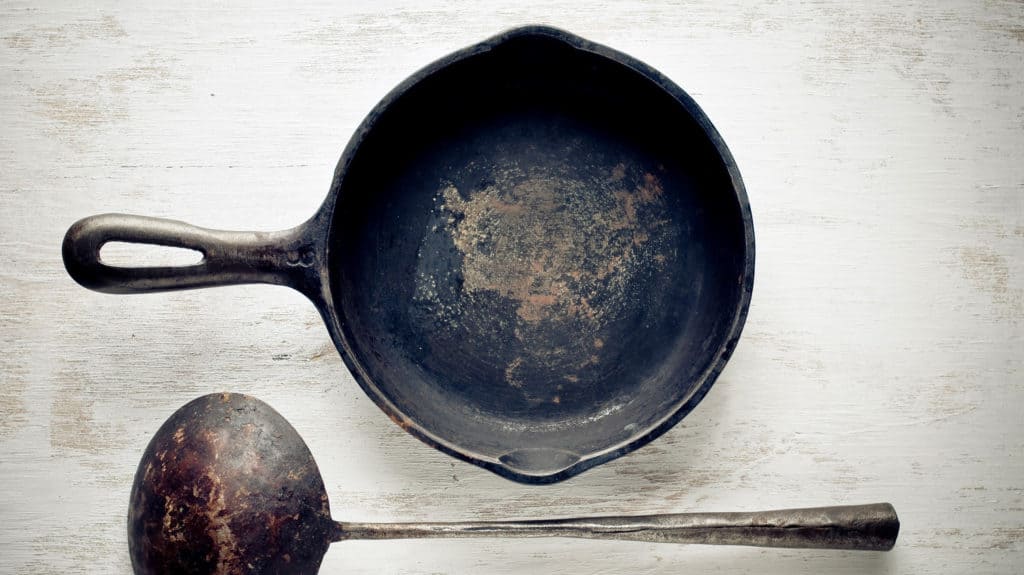
It’s quite common to find a collection of outdated cookware in many households. Perhaps you acquired an elaborate cake tin that saw only a few uses, or a surplus of muffin tins from your wedding shower prompted the need for downsizing. When deciding what to do with such old cookware, donating it may initially cross your mind. While you might offer it to friends and family first, you may still be left wondering how to handle the surplus that finds no takers. Although thrift stores might seem like an option, it’s worth reconsidering their suitability.
The majority of older cookware exhibits signs of wear and tear, reflective of the memories accumulated over time – the muffins baked on weekend mornings, and the heartwarming family meals prepared. However, chipped or scratched cookware can compromise the safety of your culinary creations. Particularly for pans with Teflon or nonstick coatings, there’s a potential for the release of harmful chemicals. Furthermore, thrift store employees lack the means to gauge the cleanliness of these items and lack the resources for proper cleaning or testing. If your cookware shows significant wear or damage, discarding it is the most prudent course of action.
25. Swimwear

Swimwear typically offers years of use, yet over time, your collection may expand to the point of cluttering your closet or dresser. While swimsuits and wetsuits shine during the summer, they often occupy valuable space throughout the rest of the year. As you embark on a clothing overhaul and seek to streamline your surroundings, you might come across surplus swimwear, some of which no longer fits or suits your needs. If the notion of donating these items springs to mind, it’s worth reevaluating that choice.
Swimsuits closely adhere to your body and prove challenging to maintain in a pristine state. Even employing hot water for washing isn’t a guaranteed solution. Additionally, swimsuits subjected to frequent wear tend to fade and lose shape, rendering them susceptible to tears. Just as with other items where cleanliness and hygiene are paramount, swimwear presents similar concerns. Thrift store employees can’t ensure the cleanliness of each item, and they lack the means to thoroughly clean every piece before sale. In this regard, discarding old swimsuits and wetsuits is a more appropriate course of action than donating them to thrift stores.
24. Shades and Blinds with Pull Cords

Among the less commonly discussed household items are window shades and blinds. When you’re no longer in need of them or aiming to refresh your living space, you might think of donating shades and blinds to thrift stores. However, this isn’t the optimal choice. Particularly for those equipped with pull cords, these window treatments pose safety risks, which can even extend to being potentially life-threatening. Homes with children and pets often consider such blinds unsuitable and unsafe. Furthermore, these window shades and blinds are designed to fit specific windows precisely.
Due to the liability concerns associated with pull-cord blinds and shades, many thrift stores decline to accept them. Moreover, these items are prone to damage, rendering them unsuitable for resale. As highlighted earlier, window blinds and shades are tailored to particular window sizes and types, making it challenging for thrift stores to effectively display and sell them within a reasonable timeframe. Streamline the process for your local thrift store by responsibly disposing of these items yourself. If they remain in good condition, you might explore the possibility of selling them on online resale platforms such as Craigslist or LetGo.
23. Baskets

If there’s a single item that thrift stores seem to have an abundance of, it’s baskets. Whether they come from Easter celebrations, received as gifts, or were meant for unfinished projects, these sizable containers tend to occupy a significant amount of space. Thrift stores frequently grapple with overloaded shelves due to the influx of donated baskets. Before considering contributing baskets to your local thrift store, it’s worth taking a moment to assess their condition. Should any signs of damage be present, it’s advisable to explore alternative options for disposal. In instances where the condition is notably poor, opting for disposal in the trash might be the best course of action.
Rather than donating an array of baskets, consider finding creative ways to repurpose them within your own home. Transform them into a distinctive storage solution for your pantry. Experiment with painting the baskets to harmonize with your home’s color scheme and decor. Engage in enjoyable arts and crafts projects with your children, incorporating the baskets. Furthermore, these baskets can prove invaluable when assembling gift baskets during holiday seasons, offering a practical and cost-effective approach. Naturally, it’s important to ensure that the baskets remain in good condition for any repurposing endeavors. The potential applications are limitless!
22. Clothes with Safety Hazards
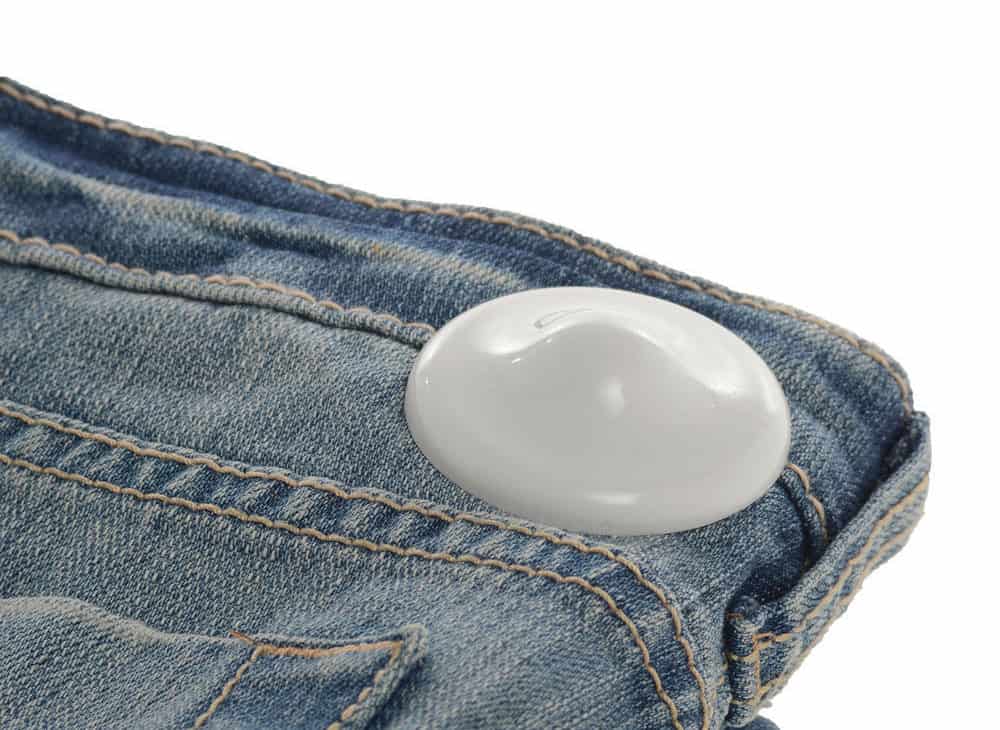
Thrift stores embrace a diverse array of clothing items, yet certain categories are less desirable. Apparel with metal components or drawstrings, particularly in the context of children’s clothing, can pose challenges for thrift stores in terms of display and safety. Furthermore, garments exhibiting moisture or chemical stains are potentially unsafe and unsellable. Prior to contemplating any donations, it’s crucial to conduct a thorough inspection of each garment. Consider whether you would want your children to wear clothing with stains or metal pieces, as this evaluation helps guide your decision. When in doubt, exercising caution is wise, and seeking alternative outlets for such items is advisable.
Even clothing featuring security tags can present risks for thrift stores. To ascertain the acceptability of specific clothing types at your local thrift store, a simple phone call can provide clarity. This approach demonstrates respect for the store’s time and resources while enabling you to align your donations with their requirements. This way, you can make informed decisions about what is suitable for donation and what isn’t, sparing employees from sorting through uncertain items. In cases where design doubts persist but the quality remains intact, exploring avenues like Craigslist or Facebook Marketplace for resale is worth considering. Alternatively, textile recyclers might express interest if the items aren’t suitable for resale.
21. Beauty Products
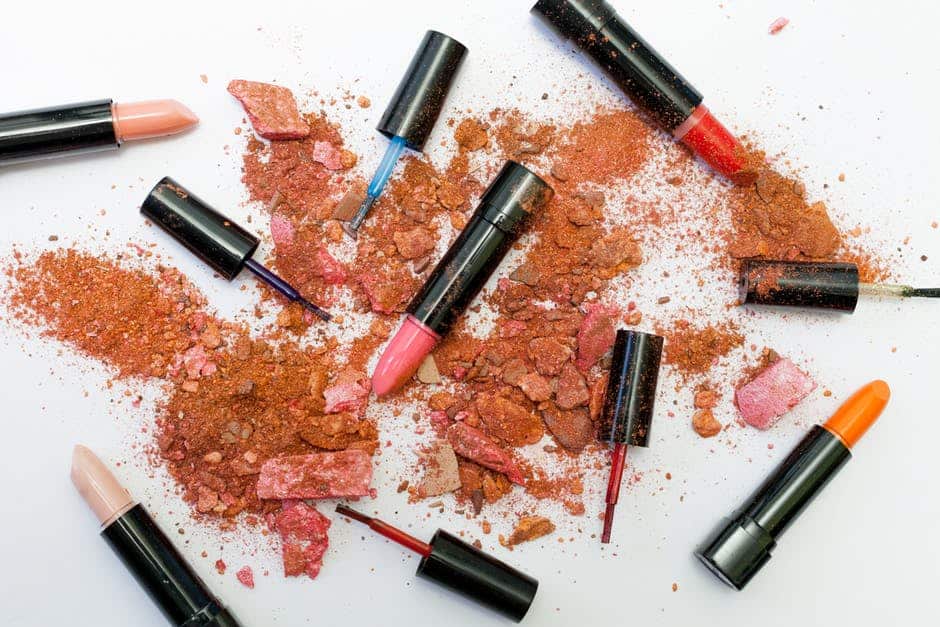
At times, we acquire shampoos or lotions with appealing packaging, only for them to languish untouched. You might recall obtaining hair or skin care items during a shopping spree at Marshalls, only to set them aside once home. As you undertake the task of decluttering and arranging your living space, the idea of donating personal care products to a thrift store might cross your mind. However, such a decision is not the most prudent. Even items that remain sealed can pose challenges in terms of ensuring their safety. Various factors come into play when donating beauty products. Once again, erring on the side of caution and exploring alternative avenues for disposal is advisable.
It might come as a surprise that unopened beauty products aren’t immune to potential contamination. If these items have surpassed their expiration dates, they can present considerable hazards, particularly in the case of makeup products. Thrift stores tend to steer clear of such items, even if unsealing has not occurred. This precaution arises from concerns that individuals may become curious and open these items to test or smell them. Thrift stores aim to prevent unopened beauty products from occupying their shelves, where the risk of bacterial contamination exists. Additionally, the possibility of customers causing mishaps or creating messes with these products adds to their reluctance. If uncertainties persist regarding the acceptability of specific products at your local thrift store, it’s a wise step to place a call before proceeding with your donation.
20. Pillows
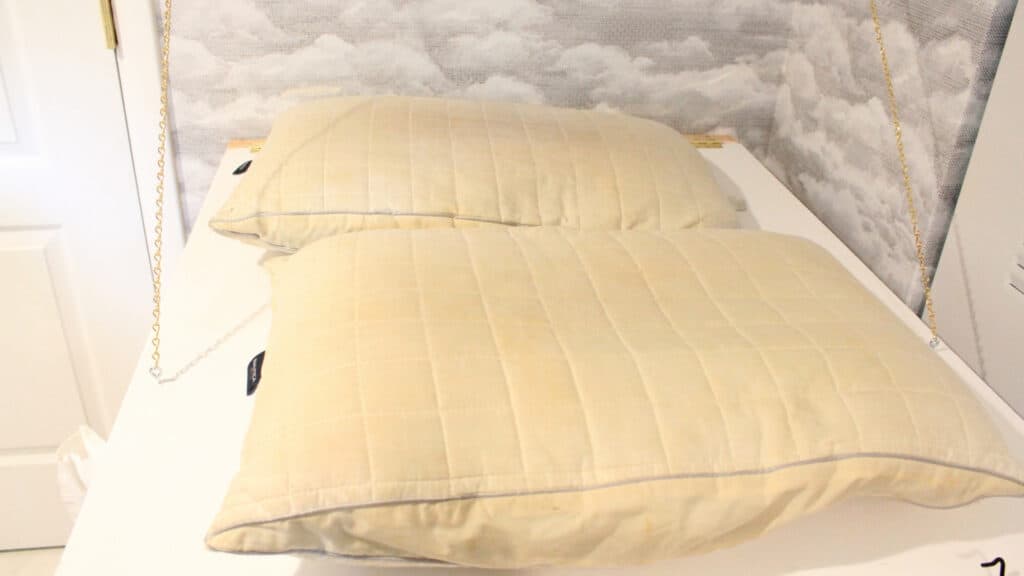
Just like other items such as mattresses and box springs, pillows are generally not deemed suitable for donation to local thrift stores. Sleeping pillows are susceptible to wear and tear that can lead to stains and unhygienic conditions. During sleep, contact with makeup, skincare products, and perspiration can occur, potentially compromising the pillow’s cleanliness. Additionally, pillows might have been exposed to various factors, including the presence of pets such as cats or dogs, which tend to share your bed. Given that thrift stores lack knowledge about a pillow’s history, exercising caution is imperative. Consequently, donating pillows is not advisable.
Even seemingly well-maintained pillows often face rejection due to the multitude of unknown variables. Store employees lack the means to ascertain whether pillows harbor pests or mites. While select thrift stores might accept throw or decorative pillows, it’s prudent to contact your local establishment before donating to determine their preferences, as these options are also subject to limitations. If you find yourself with an excess of pillows, consider exploring an alternative avenue like contacting a local animal shelter. Such shelters frequently express interest in acquiring these items to serve as bedding for rescue animals. This way, you can repurpose your extra pillows in a meaningful and impactful manner.
19. Old Carpet
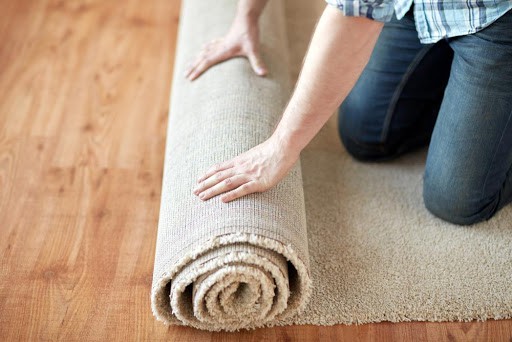
Embarking on a home renovation, where new carpeting is a focal point, can breathe fresh life into your living space. However, the question arises: what to do with the old carpet? Sometimes, the decision to update the carpet is motivated by a desire for change rather than any inherent issues with the existing one. While the initial instinct might be to donate the old carpet, it’s essential to reconsider before transporting it to the nearest thrift store. Many donation centers adhere to stringent guidelines when it comes to accepting or declining certain items.
Used wall-to-wall carpeting could be concealing unseen stains, and it might harbor allergens like dust and dander, particularly if pets have been part of your household. These concerns amplify the importance of thoughtful decision-making. Furthermore, donating carpet padding is ill-advised. Employees at thrift stores lack the means to ascertain whether such items have been thoroughly cleaned, and the padding might linger on the store shelves before finding a buyer. Purchasing carpet or padding filled with dust and allergens is an unattractive proposition for potential buyers who seek to avoid introducing these elements into their homes.
18. Scented Products

If you’re anything like me, you might discover an assortment of partially used fragrance bottles gracing your shelf. Some have stood the test of time, while others are recent additions. Your taste in perfumes and scents may have evolved over the years, rendering some of these choices less appealing now. After inquiring with close family and friends about their preferences, you might still find yourself with lingering fragrances. It’s a dilemma – not wanting to squander them while recognizing they no longer align with your preferences. So, what’s the solution for these half-used bottles?
Donating these bottles to thrift stores might seem like a kind gesture, extending the opportunity for someone else to enjoy them. However, before proceeding, it’s crucial to weigh the potential risks. Just imagine the aftermath if one of these perfume bottles were to leak within a thrift store. Consider the scenario of a child inadvertently picking up and dropping such a bottle. Thrift stores are often brimming with an array of items. The implications of a fragrance bottle breaking within the store could result in a significant mess and potential damage to nearby objects. Consequently, it’s prudent to refrain from donating scented products, encompassing both home and body sprays, to thrift stores.
17. Weapons

While it may appear to be common sense, it’s crucial to emphasize that donating any form of weapon is strongly discouraged. This encompasses hunting rifles, handguns, knives, and ammunition. These items pose inherent risks and are unsuitable for donation to your local thrift store. Thrift stores refrain from accepting such items due to their potential hazards and lack of knowledge about their history. Moreover, thrift store employees are not trained or equipped to handle weapons appropriately. Having these items on their shelves could result in significant liabilities for the store. So, before you contemplate donating that old hunting rifle stored in your garage, it’s essential to reconsider.
Conventional methods of disposal or donation of weapons are not acceptable. If you wish to get rid of them, it’s imperative to seek guidance from appropriate agencies or individuals on how to handle their careful and proper disposal. In the case of unwanted guns or ammunition, surrendering them to your local police station is a responsible option. It’s advisable to contact the non-emergency line beforehand to inform them of your intent. If you have items like knives, selling them might be a possibility, provided you adhere to all local laws concerning weapon sales. While certain outdoor organizations might accept older items, thrift stores are not suitable destinations for such items.
16. Old Toys
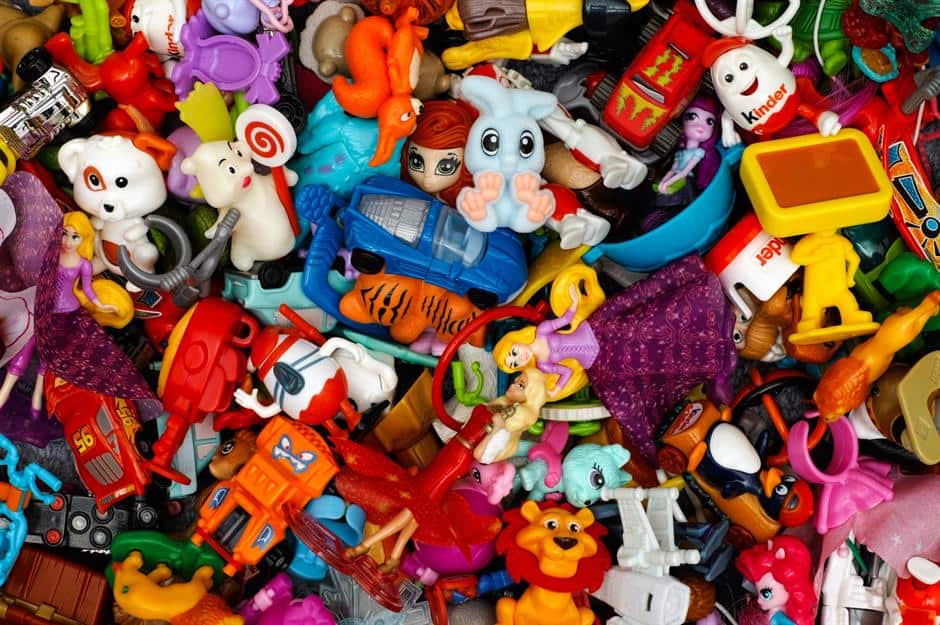
Engaging in spring cleaning often involves sifting through a trove of your family’s old toys, perhaps leading to the creation of a donation pile destined for the thrift store. While these toys might have been cherished by your children, nieces, nephews, and even local kids, they could harbor germs. Consequently, many thrift stores enforce stringent no-toy policies. The challenge lies in their inability to guarantee the cleanliness and sanitation of every nook and cranny within each toy. The time and resources required for thorough cleaning might be beyond their capacity.
Prior to bagging up your donation pile and heading to the nearest thrift store, it’s advisable to meticulously examine each toy for cleanliness and ensure they’re in proper working order. Beyond avoiding passing along unclean toys, you also want to ensure that the items you share are fully functional. After further refining your selection, it’s prudent to contact your local thrift store and inquire about their toy policy. In case they do not accept toys, exploring alternative options becomes necessary. Consider reaching out to local childcare centers or charitable organizations. These entities might be more open to accepting your old toys, provided they meet their criteria.
15. Particleboard Furniture
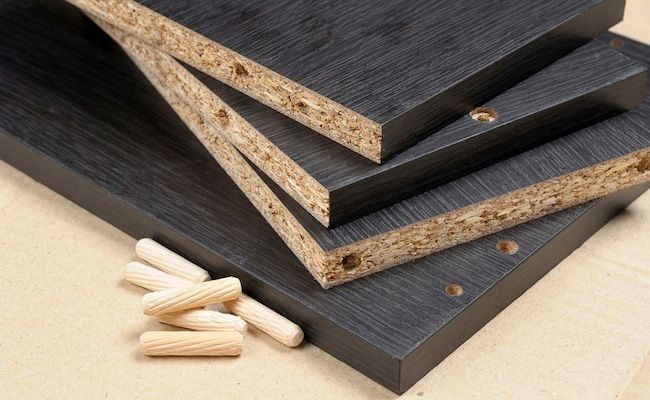
Thrift stores exercise caution and have reservations about accepting certain items, and this is particularly true for large pieces of furniture that are scratched, broken, or have chips. Such items should not be donated to thrift stores. Additionally, furniture constructed from particle board is not suitable for donation to these establishments. Particle board furniture is known for being inexpensive, easy to assemble, and lightweight. While these qualities may make them suitable for a first apartment or home, they aren’t well-suited for secondhand use and should not be offered for donation.
Furniture crafted from particle board, such as bookshelves, nightstands, or dressers, is more vulnerable to damage. These items are prone to scratches and chips and lack the sturdiness required to bear significant weight due to their lightweight nature. Most thrift stores are hesitant to accept large or bulky pieces of particle board furniture. These items occupy valuable space within the thrift store and may take an extended period to sell. All things considered, it might be more appropriate to donate such pieces to a family member or friend who is moving into their first home, ensuring a more meaningful and practical use.
14. Worn-Out Denim
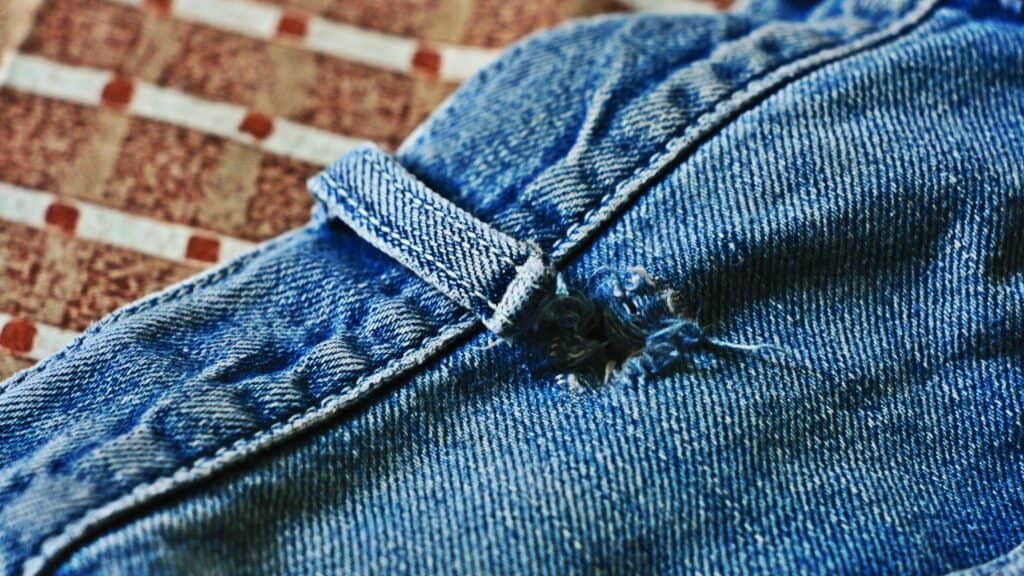
Recently, I undertook a thorough closet cleanse, meticulously evaluating each piece of clothing to determine whether to retain, donate, sell, or dispose of it. I methodically assessed every shirt, sweater, sweatshirt, and denim item I owned, categorizing them into distinct piles based on their intended future. A key aspect of the organization process was a meticulous inspection of their condition. Were there any holes, stains, abrasions, or tears? Any garment exhibiting these four signs was promptly allocated to the discard pile.
While a fantastic discovery at a thrift store might include a remarkable pair of jeans, no one desires to acquire items that are excessively worn or on the brink of tearing. A slight tear near the knee or frayed hems might seem appealing, but the prospect of jeans thinning elsewhere is far from desirable. Thrift stores have no use for jeans that are worn, faded, and torn. Instead of donating them there, one should contemplate repurposing them into shorts. However, if they have surpassed that point, it’s crucial to acknowledge reality and dispose of them responsibly by discarding them.
13. Eyeglasses
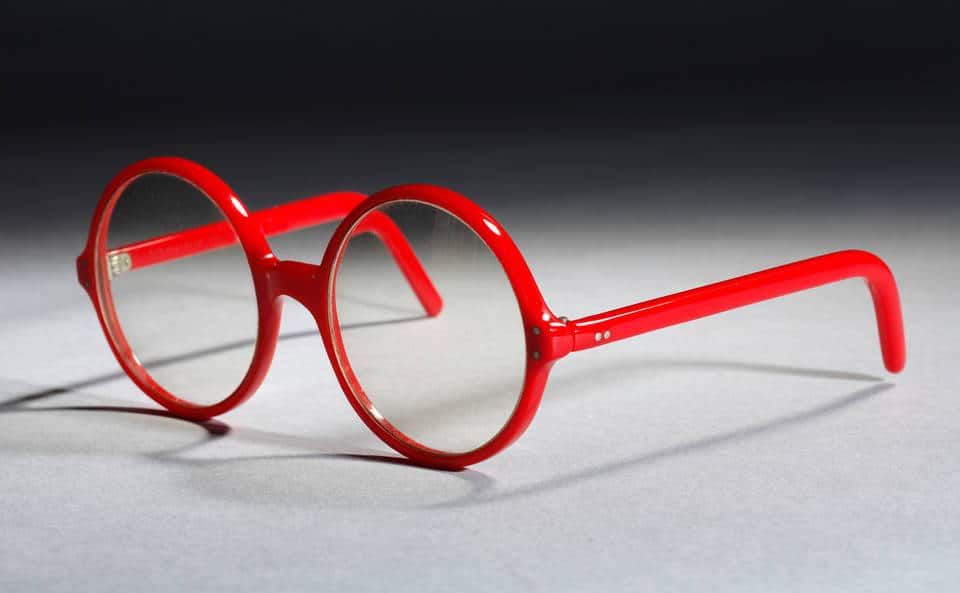
Much like various other medical devices and equipment, it’s important to avoid donating prescription eyeglasses to thrift stores. Prescription eyeglasses are tailored to individual needs and don’t adhere to a universal size. Most thrift stores generally decline these contributions. Not only is it impossible for store staff to discern the exact prescription, but such items would only interest a specific, targeted group of buyers. Consequently, prescription glasses tend to linger on shelves, occupying space that could be better utilized for quicker-selling or more broadly appealing items.
Individuals who wear prescription eyeglasses typically update their frames every few years, leaving them wondering about the proper disposal method for their old pairs. Depending on your prescription strength, you might believe that others could benefit from purchasing them at a lower cost. However, the majority of thrift stores do not accept any type of prescription eyeglasses. A more responsible course of action is to consider donating them to a local chapter of the Lions Club, an international charity with a strong emphasis on vision-related initiatives. Furthermore, many eye doctor’s offices are willing to accept old pairs of prescription glasses, providing a practical way to ensure their proper handling and potential reuse.
12. Building Materials

Have you ever contemplated giving certain areas of your home a fresh look? Alternatively, perhaps you’ve already engaged in home improvement endeavors like constructing a new deck or installing a fresh roof. Often, as a consequence of these projects, you find yourself with surplus or outdated building materials. These could encompass materials such as lumber, bricks, concrete, carpet, or shingles. The question arises: what to do with these residual materials? You might consider retaining them for future projects, or you could be inclined to declutter your space. Donating them to your local thrift store might cross your mind as a potential solution.
However, before you gather up all the old or unused materials and head to the nearest thrift store, it’s essential to reach out to them and inquire whether they accept such items. Many thrift stores are unable to accommodate these materials, so having an alternative plan in place is advisable. Exploring other avenues, like donating them to local housing organizations, is a possibility. Additionally, you could explore recycling options with nearby building suppliers to determine if they’re willing to accept used materials and repurpose them into new ones. Lastly, for materials that have exceeded their utility, renting a dumpster during your home project might be a practical step to consider.
11. Food

There’s a multitude of items that you can generously contribute to thrift stores, meeting high demand and garnering appreciation. Certain kitchen and cooking supplies can also find new life at thrift stores, provided they are in proper working order. However, there’s one category of items that should always be excluded: food. Donating food to thrift stores is discouraged due to various reasons. It’s considerate to spare thrift store employees the effort and time required to sort through donated food items. Despite variations in shelf life, thrift stores generally do not entertain the notion of accepting food donations.
The practice of continually checking food item expiration dates to prevent the sale of expired products isn’t appealing to thrift stores. Various other organizations, both local and national, are more than willing to accept canned goods and non-perishable items. These goods can serve a meaningful purpose in aiding those in need. Local food banks, churches, and homeless shelters often welcome non-perishable items. It’s prudent, however, to meticulously review expiration dates before donating to these alternative organizations. Prior to contributing, consider reaching out to these local entities to ascertain their specific food donation guidelines and requirements.
10. Anything With Pet Damage
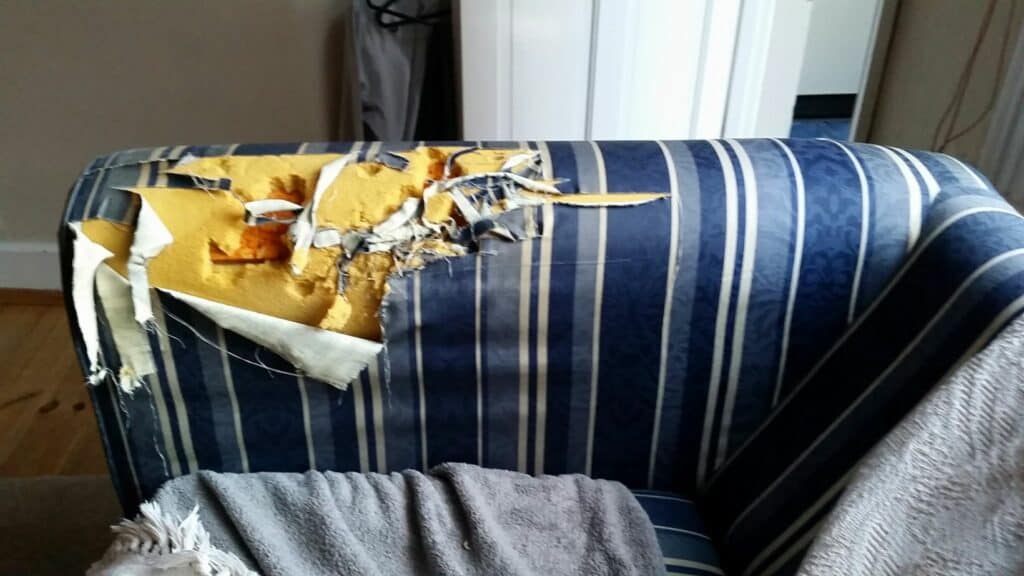
For those of us who adore our pets and find ourselves under their charming influence, the way they seamlessly make themselves comfortable on our furniture is a familiar sight. However, this companionship often translates into the need for regular furniture cleaning due to pet hair. Under these circumstances, the idea of donating such items to local thrift stores might not cross one’s mind. This is particularly important because pet hair, dander, or fur can trigger allergies in certain individuals. Even with diligent cleaning, minuscule particles might persist, causing discomfort for potential buyers. Moreover, thrift stores typically display little interest in larger, bulkier pieces.
Beyond furniture items with pet hair concerns, it’s equally important to refrain from donating items that have been chewed, soiled, or stained by your pets. The potential presence of unseen germs or allergens can be a significant deterrent for potential buyers. This extends beyond thrift stores; most organizations are unwilling to accept items damaged by pets. While we hold our furry companions dear, items that have been chewed, stained, or harmed should be appropriately disposed of rather than donated to local stores or organizations. It’s a thoughtful approach that considers both the wellbeing of others and the integrity of the donation.
9. Automobile Parts
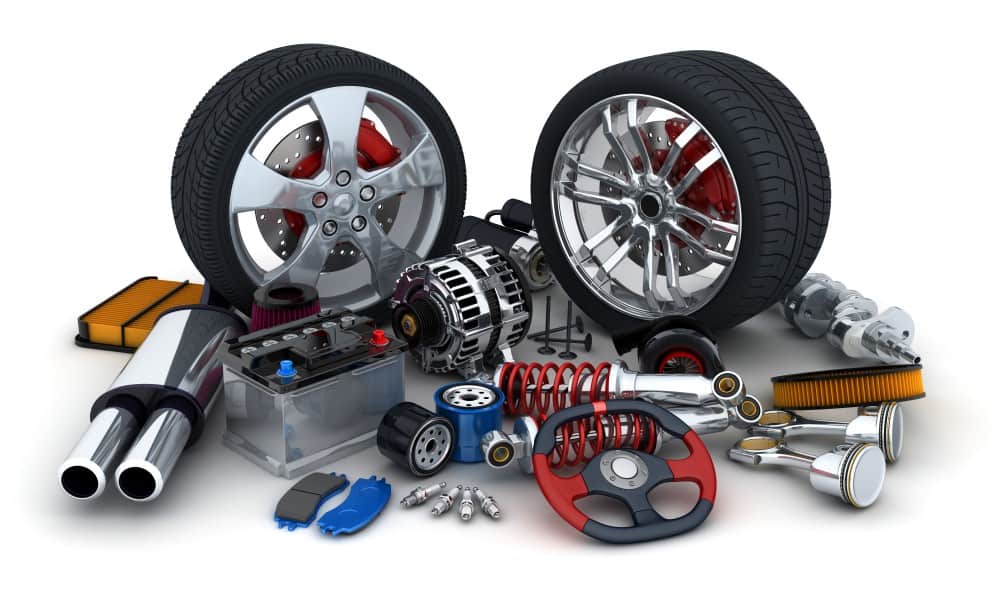
During the process of cleaning out your garage or shed, you might stumble upon various items that are no longer in use or are in excess. Among these items, you might find automotive components like tires and wheels that you have an abundance of. Alternatively, you might possess other car parts, such as a battery that is still functional but not in optimal condition. Instead of discarding them outright, the idea of donating them to your local thrift store might cross your mind. However, it’s important to note that most thrift stores are unable to accept these particular items.
The challenge lies in the uncertainty surrounding the condition of specific items, such as a car battery. Tires with minimal tread remaining pose difficulties in terms of resale viability. Furthermore, the bulkiness of these items within the store can lead to spatial constraints. Alongside tires, wheels, and batteries, it’s advisable not to donate other automotive components like windshield wiper fluid or oil. Thrift stores refrain from accepting these items due to potential age or expiration concerns. If you possess older automotive items, it’s prudent to consider appropriate disposal methods or potentially gifting them to friends and family, contingent upon their condition.
8. Gas or Kerosene Heaters
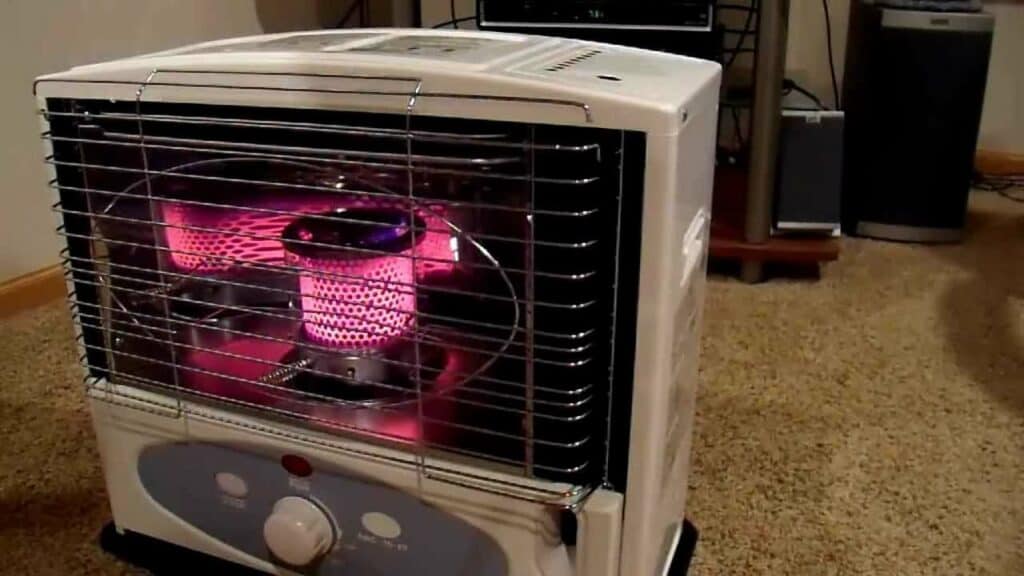
As time goes by, you might discover that your collection of belongings is steadily growing. Some of these possessions might serve genuine purposes, while others may be less essential. Among them, some might have been acquired through personal purchases, while others could have been received as gifts over time. For individuals with a strong affinity for outdoor activities, the possession of multiple gas or kerosene heaters for chilly nights might not be uncommon. If you’ve found yourself with an excess of these heaters or are planning an upgrade, you might contemplate the fate of the extra or older units. One avenue to explore is selling them on online garage sale platforms.
However, if the idea of reselling doesn’t appeal to you, you’ll likely explore alternative routes. Swiftly removing these items from your home might hold more appeal than attempting to sell them. It’s important, though, not to rush into delivering these gas and kerosene heaters to your local donation center. Such establishments are unlikely to be equipped to accept them. Safety and liability concerns arise from attempting to resell these items. Thrift store staff wouldn’t have insight into their working condition or potential exposure to hazardous substances. It’s a responsible choice to carefully consider disposal methods that ensure both safety and proper handling.
7. Old Electronic Devices

At some point, most of us have encountered the need to upgrade our electronic devices. Whether it’s a computer that’s slowed over the years or a printer producing unclear prints despite cartridge adjustments or replacements, technology inevitably reaches a point where replacement becomes necessary. The question then arises: what to do with devices you’re not quite ready to discard? Perhaps you’re hopeful that the right person could potentially repair them.
Properly disposing of old computers, printers, or scanners isn’t common knowledge for many individuals. The hope that these devices could be repaired often leads people to consider donating them. However, it’s important to note that the majority of thrift stores are unlikely to accept outdated electronic equipment. Firstly, there’s uncertainty about the operational state of these machines. Secondly, some people might not be aware of, or take the time to perform, a full factory reset, which could leave their personal information vulnerable. If this situation resonates with you, it’s advisable to research proper recycling or disposal methods for these items rather than opting for donations. Taking the responsible route ensures both the privacy of your information and the environmentally conscious handling of electronic waste.
6. Items With Rust
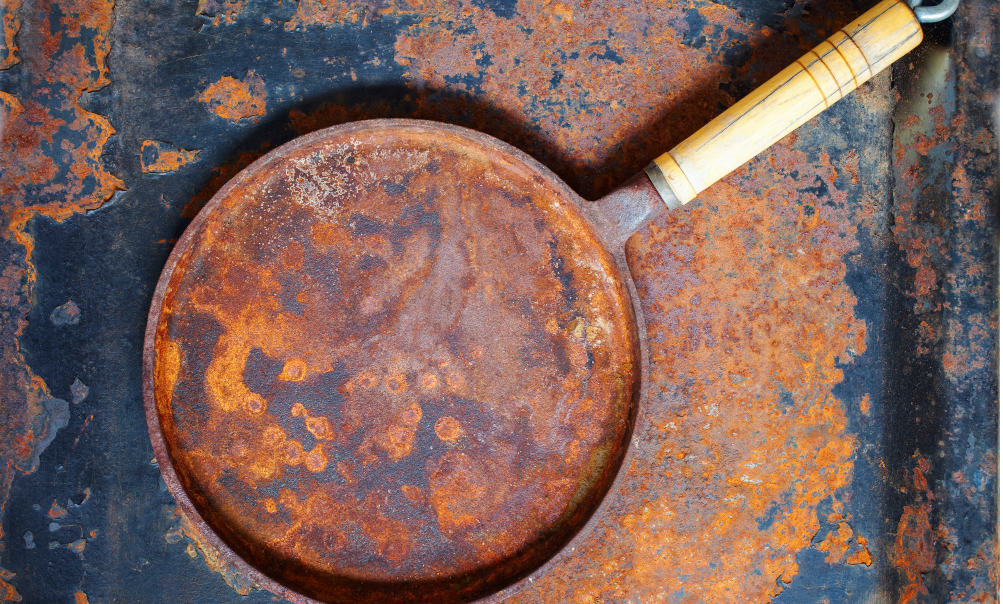
Have you ever acquired a pre-owned item from a garage sale or online platform, only to discover unforeseen damage? Beyond the typical scuffs and dents, rust also poses a notable issue. Occasionally, thrift stores are perceived as convenient destinations to offload unwanted belongings as a last resort. While many valuable contributions can be made through donations, it’s crucial to meticulously inspect your items before parting with them. Should any item display signs of rust or have the potential to rust, it’s advisable not to include it in your donation.
Perhaps you’re in the process of upgrading your kitchen utensils and flatware, leaving you with an assortment of old knives, forks, and spoons. The thought of donating these items to a local thrift store might cross your mind. However, items of this nature are susceptible to rust if not cared for adequately or if left unused for extended periods. It’s important to exercise vigilance when assessing these items. Even if there exists a slight possibility of rust or its development, it’s wise to consider proper disposal methods rather than opting for donation. Such a conscious approach ensures both responsible handling and the preservation of the quality of donated items.
5. Old Computer Accessories
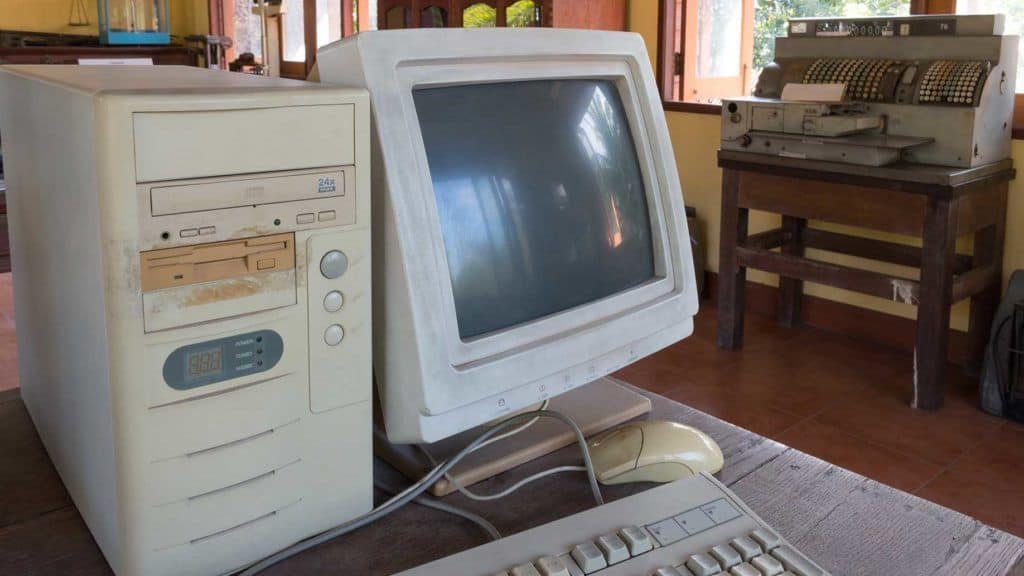
Upon upgrading a piece of technical equipment, the need for all its accompanying accessories might diminish. An example of this is evident in individual printers, each with distinct ink cartridge requirements. If you transition from a solitary printer to a multifunctional device encompassing printing, copying, and scanning capabilities, your existing ink cartridges are unlikely to be compatible. If these cartridges still hold ink, the idea of discarding them outright might be unappealing. Selling them could also be less viable, as most individuals prefer purchasing brand-new cartridges for assurance and convenience.
Thrift stores and their staff cannot accurately gauge the remaining ink or toner within a cartridge through visual inspection alone. Determining the ink level necessitates inserting cartridges into a printer to obtain this information. However, this aspect only solves part of the equation. Another concern revolves around whether the ink within the cartridge has dried up. Personal experience reveals instances where seemingly full cartridges failed to produce clear prints due to ink dryness from prolonged disuse. These nuances of cartridge condition are indiscernible, rendering thrift stores hesitant to accept them.
4. Air Conditioners
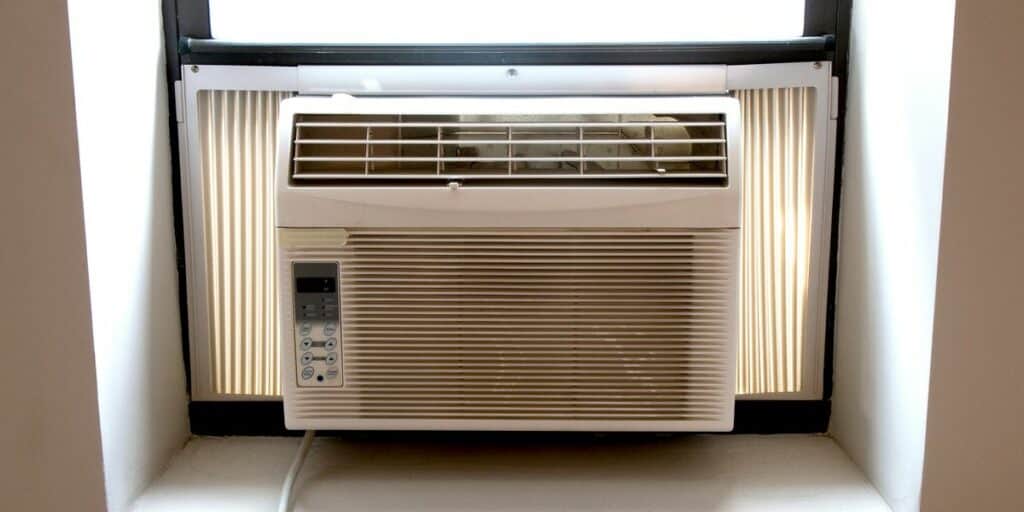
Air conditioners are among the most common household appliances, with the potential for a well-maintained unit to function effectively for up to 15 years. When the time comes to replace or upgrade your air conditioning system, the idea of donating your previous appliance to a local thrift store might cross your mind. However, it’s essential to note that the majority of thrift stores are not equipped to accept used air conditioners for several compelling reasons. Air conditioners are equipped with refrigerants, and in compliance with laws and regulations, any units sold or donated must have been manufactured after January 1, 2010. This requirement stems from legislation that mandates the use of newer, more environmentally efficient refrigerants.
Air conditioners manufactured before January 1, 2010, are more likely to contain ozone-depleting refrigerants. Determining the manufacturing date or refrigerant type of a unit may prove challenging for your local thrift store. In the event that the store cannot accept your air conditioner, it’s crucial not to resort to improper disposal methods. Disposing of such units in landfills is illegal due to the refrigerant component. These cooling agents contain chemicals that pose significant harm to the environment if left to leach into the soil.
3. Large Exercise Equipment

If you’re like many individuals, you might have embraced a New Year’s resolution to prioritize your health by adopting better eating habits and incorporating regular workouts. To economize, you could opt to acquire second-hand exercise equipment from garage sales, online marketplaces, or platforms like eBay. However, after a few months, you might observe a transformation in the equipment’s role—from an exercise machine to a makeshift clothes holder. Faced with this scenario, the idea of donating the equipment, given its underutilization, could cross your mind. A local thrift store might be your initial consideration.
Nonetheless, larger exercise equipment items like treadmills, Bowflex machines, and elliptical trainers consume substantial space. Thrift stores have limitations in terms of storage capacity, and there’s a possibility that the equipment might not be in perfect working condition. There’s a significant risk that the equipment might be damaged or malfunctioning. In lieu of directly depositing the equipment at a thrift store, it’s advisable to explore alternate options such as reselling it or donating it to local organizations. You might also want to inquire among close family and friends to determine if they would benefit from the equipment.
2. Recalled Items

Thrift stores hold a responsibility to offer safe and clean products to their customers. This mandates a thorough assessment of all donated items to prevent potential liability issues. Certain items, including baby products, medical assistive devices, and exercise equipment, which have safety recalls or fail to meet the current safety standards set by the U.S. Consumer Product Safety Commission, should not be included in donations. If you intend to contribute items to a local thrift store, it’s crucial to undertake an initial safety evaluation prior to contemplating donation or transporting items to the donation drop-off point in your community.
Thrift store staff cannot realistically verify every item for potential recalls, which explains their cautious stance on accepting specific items, regardless of their age or condition. Even recently acquired or up-to-date items can be subject to safety recalls. Thrift stores are unwilling to receive or attempt to sell items that might not conform to current safety regulations. If you are committed to making a donation, conducting research to identify any pending recalls for the specific item is essential. In cases where no recalls are found, you may still need to explore alternative organizations for potential donations.
1. Crayons
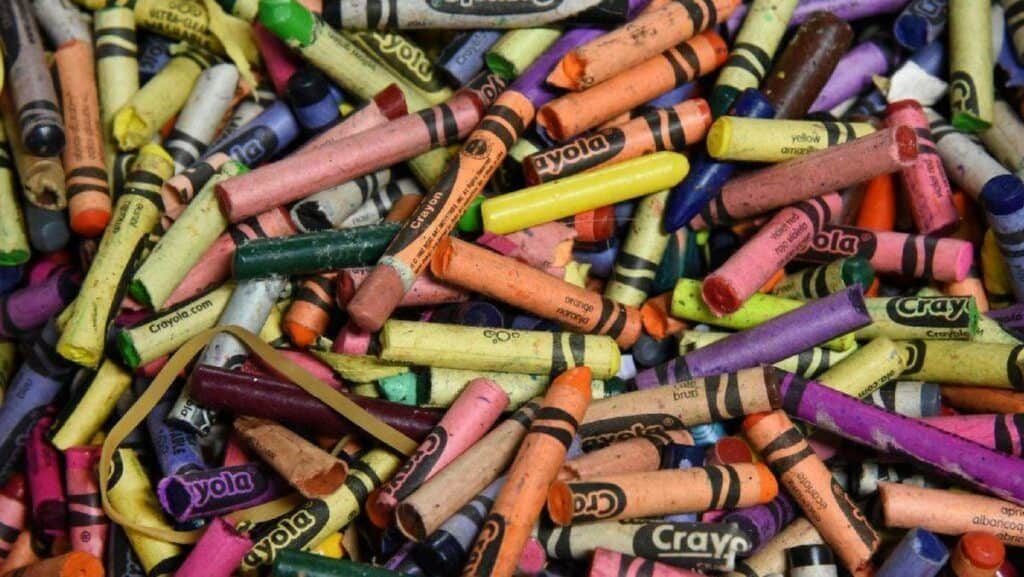
If you’ve spent any time around children, you’re undoubtedly familiar with the ubiquitous presence of crayons. Whether at home or in daycare, coloring with crayons is a common pastime. During a playroom cleanup when you’re deciding which toys or items to donate, crayons might be among the items you consider. It’s possible that your children have outgrown coloring or have accumulated an excess of crayon sets. However, prior to gathering all the crayons and taking them to a local donation center, it’s advisable to make contact with them first.
Crayons might appear to be innocuous donation items, but the reality is that many thrift stores decline them. This is due to concerns about certain crayons potentially containing lead. If a crayon holds a significant amount of lead and a young child ingests or chews on it, there’s a substantial risk of lead poisoning. Determining which crayons fall into the group containing lead and which ones are safe poses a considerable challenge for thrift store staff. If you’re faced with an excess of crayons, proper disposal might be a consideration, but it’s important not to simply deposit them at a donation center, thus passing on the issue.
